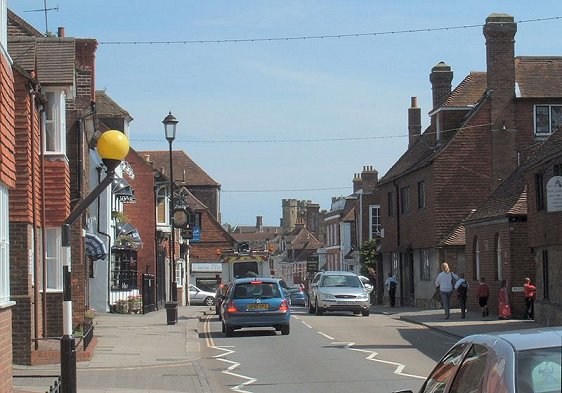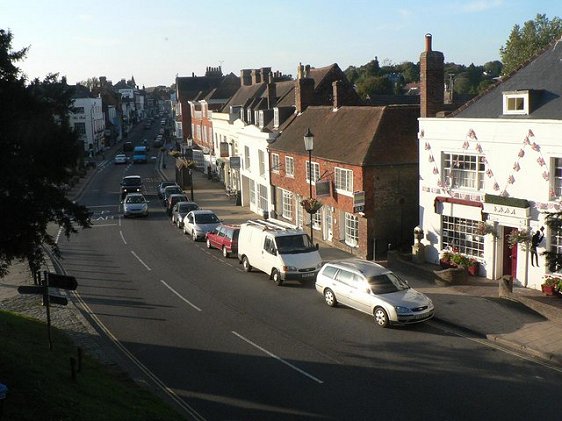Battle is a small town n the district of Rother, in East Sussex, England. It is about 80 km to the southeast of London, and has a population of around 6,000 people.
 Battle, East Sussex, England: Source: https://commons.wikimedia.org/wiki/File:Battle_Sussex_street.jpg
Battle, East Sussex, England: Source: https://commons.wikimedia.org/wiki/File:Battle_Sussex_street.jpgAuthor: Sandpiper

The town of Battle was named after the Battle of Hastings of 1066, where Duke William II of Normandy, defeated King Harold II, the last Anglo-Saxon King of England, allowing William II to ascend the English throne as King William I, also known as William the Conqueror.
Battle Abbey was founded and dedicated in 1095 to commemorate the battle. Its high altar reputedly marks the spot where Harold II died in battle. The abbey, which is still standing today, is one of the main attractions in town.
The town of Battle developed around Battle Abbey. In medieval times it was renowned as a center for the manufacture of gunpowder.
 High Street, Battle: Source: https://commons.wikimedia.org/wiki/File:Battle,_High_Street_-_geograph.org.uk_-_560754.jpg
High Street, Battle: Source: https://commons.wikimedia.org/wiki/File:Battle,_High_Street_-_geograph.org.uk_-_560754.jpgAuthor: Chris Downer

Visiting Battle
From London, take the M25 motorway to Junction 5, then continue in a southeast direction on the A21 road. After Robertsbridge, you arrive at a roundabout where you should take the A2100 road to reach Battle.Places of Interest in Battle
- Battle Abbey: Abbey founded to commemorate the Battle of Hastings.
- Blackhorse Quarry: Palaeontological site where the fossils of prehistoric animals have been discovered.
- Darwell Wood: Wooded area of biological importance.
- Hemingfold Meadow: Two meadows of biological interest, as a number of rare flowering plants have been discovered.
- Telham Hill: Hill from which the army of William the Conqueror first caught sight of the army of King Harold II, leading to the Battle of Hastings.
 Latest updates on Penang Travel Tips
Latest updates on Penang Travel Tips

Copyright © 2003-2025 Timothy Tye. All Rights Reserved.

 Go Back
Go Back